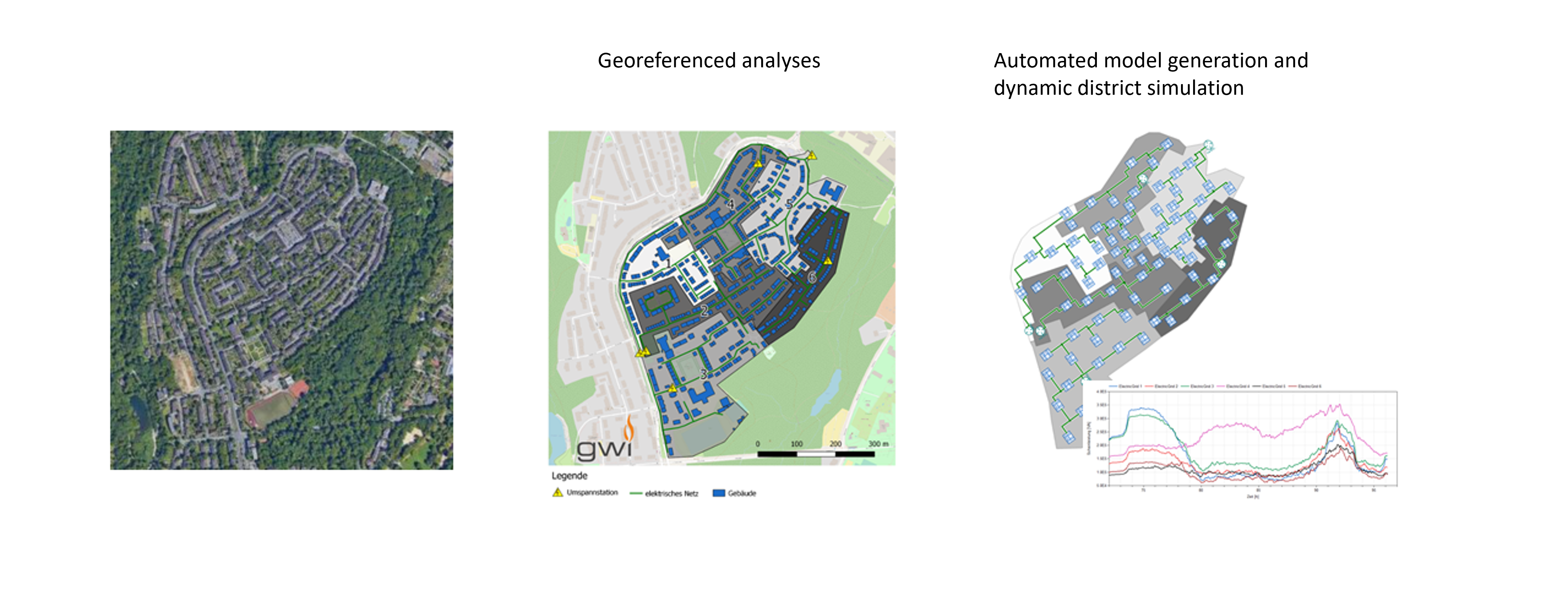

Sie möchten über aktuelle Veranstaltungen des GWI informiert werden?
Melden Sie sich hier kostenlos und unverbindlich zu unserem Veranstaltungs-Newsletter an.

Sie möchten über aktuelle Veranstaltungen des GWI informiert werden?
Melden Sie sich hier kostenlos und unverbindlich zu unserem Veranstaltungs-Newsletter an.

Energy system simulations enable the study and optimization of transformation processes for the integration of renewable energies into energy grids, considering synthetic or real structure parameters.
Energy System Simulation; © Pixabay; Gerd Altmann
Modeling and examination of coupled energy grids
For this purpose, adaptive systems are being examined that combine the not always simultaneous availability of RE and the demands for electrical energy, heat, and fuels with as comprehensive an integration of RE as possible and the lowest possible use of primary energy through traditional energy carriers.
The integration of the individual interacting actors in the energy system of the future (grid and system levels) can be studied at GWI using dynamic simulations in Modelica. Here, detailed georeferenced analyses (GIS analyses) can transfer real energy infrastructures into dynamic neighborhood models (Digital Twin), so that simulations with high spatial and temporal resolution can be carried out. The in-house bottom-up approach makes it possible to examine the multi-directional interactions between consumers, producers, storage, and grids in technology-open path analyses and to develop energy concepts for a climate-neutral transformation of the energy system. The GWI's energy system model allows for considering economic criteria beyond these techno-ecological considerations. These and other criteria are implemented in the individual examination levels of the overall model. The starting points for these examination levels are real settlement structures or synthetic reference typologies.
